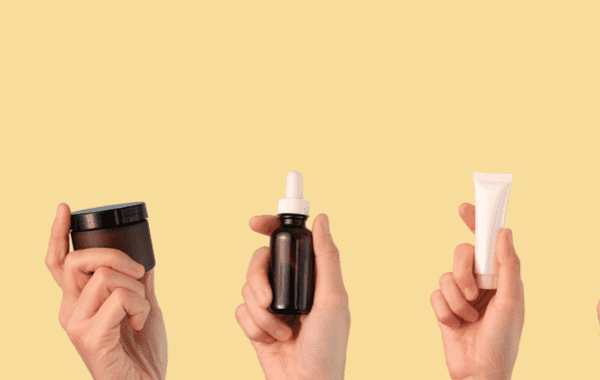If you don’t feel like reading, don’t worry! You can watch this as a video!
We all want to feel loved and accepted for who we are. For many years, society has told us that there is a certain «ideal» of beauty and that if we don’t fit into that mold, we are not good enough. As we talked about in our previous blog, our teens and tweens are constantly bombarded with images and messages telling them that need to be thinner and have perfect skin, which has led to a lot of negative body image issues, especially at this age. The body positivity movement is working to change all that by promoting the idea that beauty comes in all shapes and sizes and encourages people to love their bodies no matter what.
This is a great step in the right direction, that is why in this blog post I want to go one step further and embrace «skin positivity» as essential to teach our tweens and teens to connect with love for who we are, both inside and out. Keep reading!
What is meant by body positivity?
Body positivity has its roots in 1850 when women were arguing against wearing corsets when a woman’s shape changed. The phrase body positivity has become more popular in recent years and aims primarily at understanding the influence of body images on mental well-being in individuals.
Why a positive body image is needed in teenagers?
A teenager’s body image is the way they see their physical appearance, and how well they perceive themselves. Some studies have shown that a negative body image may lead to an increased chance of depression and eating disorders linked to the exposure to portrayals of an «ideal physique».
A positive body image represents appreciation, respect, and recognition for the body and its functions and activities. It involves self-care and acceptance. While Body positivity and acceptance are certainly challenging, they may help improve health, and well-being and promote social inclusion.

Body positivity movement vs Fat acceptance movement
The body positivity movement aims for people to improve their self-confidence through the acceptance of their own body shape, body weight, or other aspects that make each person unique.
However, when influencers on social media platforms exposed images related to body positivity, these were related to women evoking the typical perfection of social media: great shape, and perfect skin, among other characteristics which marginalized bigger bodies from the conversation.
That is why the fat acceptance movement gained strength because it aims for the body liberation of fat bodies, through the acceptance of the fact that there is real beauty in different body types or body shapes and fat-shaming should not have a place in popular culture.
So far marginalized bodies found community, and more accepting advertising campaigns turned people with poor body image into people who feel confident in their own bodies. Also, the fat acceptance movement has found an interesting focus on equal treatment for fat people.

The evolution of the body positivity movement
Body positivity has helped overcome the social message that promotes negative body image and harmful beliefs that exist. Body positivity has positive psychology that aims to enhance functioning and wellbeing instead of focusing on illness and disorder. Body positivity means respect for one’s body, even despite negative body pictures.
The body positivity movement at the end tries to improve the mental health of those people with body image concerns. However, this movement has been sometimes misunderstood as the searching for a good appearance which transformed the message, especially to young people, who received the idea that a «good appearance» needs to be associated with slimmer people who show to be happier, healthier, and more gorgeous. That is why body neutrality came into the picture.
From Body Positivity to Body Neutrality?
While the Body Positive movement encourages people to love their body regardless of appearance, which is amazing, body neutrality focuses more on the good your body is doing and not what it looks like.
Our body is the interface through which we interact with the world. We can walk with our legs, we can breathe through our nose, we can admire nature with our eyes, and we can hug our loved ones with our arms. When we focus both, on body acceptance and body functions as well, we can improve mental health and enable not just body confidence but great health.
Taking Body positivity and Body Neutrality to the Skin
With skin, we are facing a similar effect of social comparison than with weight. Our teenagers are becoming filter and photoshop-dependant if they decide to show their face in a photo because they don’t feel confident enough to show themselves just as they are.
The truth is that those retouched images shown on social media are not real. Sebum exists and is not a bad thing, it actually protects our skin. 85% of teenagers go through a skin condition during this age so, we can’t accept that these idealized images affect their body confidence.

Body positivity movement applied to the skin
When we bring the body-positive model to the skin, it means that we start understanding that genetics exist and therefore different skin types are a matter of nature. We should appreciate every aspect of our skin, including the sebum, acne, or any other condition.
The stress that causes judging one’s body aspect, in this case, the skin, causes cell inflammation and can lead to worsening any skin condition that can be affecting our kids. The challenge here is that when our tweens or teens look in the mirror they learn to feel self-love and self-compassion instead of judging themselves for not having what social media and magazines told them about what the «perfect» skin looks like.
Body neutrality applied to the skin
Now let’s talk about body neutrality. If we embrace this concept we are not only talking about accepting the skin we have but also respecting it and taking the appropriate actions to enhance the good that our skin is doing for us and develop positive feelings when we are taking those actions.
Let´s go further... skin positivity does exist?
Not as a movement like the body positivity one, however, taking care of the skin could be a great way to practice body acceptance in tweens and teenagers.
3 Steps to practice skin acceptance in teenagers
Putting all we have talked about together, let’s see a practical way to teach our tweens and teens to practice skin positivity using a skin ritual as we saw in our last blog post. So, let’s take the three steps of body acceptance and see how a skincare ritual can contribute to those.
Step 1: Perception
Perception is more related to thinking patterns. When tweens and teens are constantly comparing themselves with the perfection stereotype, it’s probably that in their minds the «I’m not pretty enough» appears constantly.
An efficient way to change those thinking patterns could be by replacing them with opposite thoughts. That is why the second step of the skincare ritual (check out our previous post) which includes repeating positive mantras while performing the cleansing routine would be a great way of changing those patterns unconsciously created.
Step 2: Interpretation
Interpretation is more related to feelings and emotions derived from those thinking patterns. If a tween or teen doesn’t feel good or confident, emotions and energy will come down. That is why in the first and third steps of the skincare ritual, kids are asked to intend a positive emotion and feel grateful for that moment respectively, which will help to increase the feeling positive instinct we all have inside.
Step 3: Behavior
This step is related to those actions performed to take care of ourselves. If we are referring to a skincare ritual, it would be related to choosing the right skincare routine (anticipation step) and performing it (repeat step).
Body positivity is a movement that is quickly gaining traction, and for good reason. When we adopt a body-positive mindset, not only do we feel better about ourselves, but we also start to appreciate our bodies for all that they do for us. This principle can be applied to the skin as well. We should start to see our skin in a new light – as something that is unique and amazing, no matter what condition it may be in. By sharing this message with other moms, we can help create a community of women who are supportive and understanding of those struggles that our teenagers are having with skincare. Let’s work together to promote a positive image and acceptance of the skin we have!
Subscribe to Our Blog!
About Me

Beatriz Morales
If you don’t feel like reading, don’t worry! You can watch this as a video!
We all want to feel loved and accepted for who we are. For many years, society has told us that there is a certain «ideal» of beauty and that if we don’t fit into that mold, we are not good enough. As we talked about in our previous blog, our teens and tweens are constantly bombarded with images and messages telling them that need to be thinner and have perfect skin, which has led to a lot of negative body image issues, especially at this age. The body positivity movement is working to change all that by promoting the idea that beauty comes in all shapes and sizes and encourages people to love their bodies no matter what.
This is a great step in the right direction, that is why in this blog post I want to go one step further and embrace «skin positivity» as essential to teach our tweens and teens to connect with love for who we are, both inside and out. Keep reading!
What is meant by body positivity?
Body positivity has its roots in 1850 when women were arguing against wearing corsets when a woman’s shape changed. The phrase body positivity has become more popular in recent years and aims primarily at understanding the influence of body images on mental well-being in individuals.
Why a positive body image is needed in teenagers?
A teenager’s body image is the way they see their physical appearance, and how well they perceive themselves. Some studies have shown that a negative body image may lead to an increased chance of depression and eating disorders linked to the exposure to portrayals of an «ideal physique».
A positive body image represents appreciation, respect, and recognition for the body and its functions and activities. It involves self-care and acceptance. While Body positivity and acceptance are certainly challenging, they may help improve health, and well-being and promote social inclusion.

Body positivity movement vs Fat acceptance movement
The body positivity movement aims for people to improve their self-confidence through the acceptance of their own body shape, body weight, or other aspects that make each person unique.
However, when influencers on social media platforms exposed images related to body positivity, these were related to women evoking the typical perfection of social media: great shape, and perfect skin, among other characteristics which marginalized bigger bodies from the conversation.
That is why the fat acceptance movement gained strength because it aims for the body liberation of fat bodies, through the acceptance of the fact that there is real beauty in different body types or body shapes and fat-shaming should not have a place in popular culture.
So far marginalized bodies found community, and more accepting advertising campaigns turned people with poor body image into people who feel confident in their own bodies. Also, the fat acceptance movement has found an interesting focus on equal treatment for fat people.

The evolution of the body positivity movement
Body positivity has helped overcome the social message that promotes negative body image and harmful beliefs that exist. Body positivity has positive psychology that aims to enhance functioning and wellbeing instead of focusing on illness and disorder. Body positivity means respect for one’s body, even despite negative body pictures.
The body positivity movement at the end tries to improve the mental health of those people with body image concerns. However, this movement has been sometimes misunderstood as the searching for a good appearance which transformed the message, especially to young people, who received the idea that a «good appearance» needs to be associated with slimmer people who show to be happier, healthier, and more gorgeous. That is why body neutrality came into the picture.
From Body Positivity to Body Neutrality?
While the Body Positive movement encourages people to love their body regardless of appearance, which is amazing, body neutrality focuses more on the good your body is doing and not what it looks like.
Our body is the interface through which we interact with the world. We can walk with our legs, we can breathe through our nose, we can admire nature with our eyes, and we can hug our loved ones with our arms. When we focus both, on body acceptance and body functions as well, we can improve mental health and enable not just body confidence but great health.
Taking Body positivity and Body Neutrality to the Skin
With skin, we are facing a similar effect of social comparison than with weight. Our teenagers are becoming filter and photoshop-dependant if they decide to show their face in a photo because they don’t feel confident enough to show themselves just as they are.
The truth is that those retouched images shown on social media are not real. Sebum exists and is not a bad thing, it actually protects our skin. 85% of teenagers go through a skin condition during this age so, we can’t accept that these idealized images affect their body confidence.

Body positivity movement applied to the skin
When we bring the body-positive model to the skin, it means that we start understanding that genetics exist and therefore different skin types are a matter of nature. We should appreciate every aspect of our skin, including the sebum, acne, or any other condition.
The stress that causes judging one’s body aspect, in this case, the skin, causes cell inflammation and can lead to worsening any skin condition that can be affecting our kids. The challenge here is that when our tweens or teens look in the mirror they learn to feel self-love and self-compassion instead of judging themselves for not having what social media and magazines told them about what the «perfect» skin looks like.
Body neutrality applied to the skin
Now let’s talk about body neutrality. If we embrace this concept we are not only talking about accepting the skin we have but also respecting it and taking the appropriate actions to enhance the good that our skin is doing for us and develop positive feelings when we are taking those actions.
Let´s go further... skin positivity does exist?
Not as a movement like the body positivity one, however, taking care of the skin could be a great way to practice body acceptance in tweens and teenagers.
3 Steps to practice skin acceptance in teenagers
Putting all we have talked about together, let’s see a practical way to teach our tweens and teens to practice skin positivity using a skin ritual as we saw in our last blog post. So, let’s take the three steps of body acceptance and see how a skincare ritual can contribute to those.
Step 1: Perception
Perception is more related to thinking patterns. When tweens and teens are constantly comparing themselves with the perfection stereotype, it’s probably that in their minds the «I’m not pretty enough» appears constantly.
An efficient way to change those thinking patterns could be by replacing them with opposite thoughts. That is why the second step of the skincare ritual (check out our previous post) which includes repeating positive mantras while performing the cleansing routine would be a great way of changing those patterns unconsciously created.
Step 2: Interpretation
Interpretation is more related to feelings and emotions derived from those thinking patterns. If a tween or teen doesn’t feel good or confident, emotions and energy will come down. That is why in the first and third steps of the skincare ritual, kids are asked to intend a positive emotion and feel grateful for that moment respectively, which will help to increase the feeling positive instinct we all have inside.
Step 3: Behavior
This step is related to those actions performed to take care of ourselves. If we are referring to a skincare ritual, it would be related to choosing the right skincare routine (anticipation step) and performing it (repeat step).
Body positivity is a movement that is quickly gaining traction, and for good reason. When we adopt a body-positive mindset, not only do we feel better about ourselves, but we also start to appreciate our bodies for all that they do for us. This principle can be applied to the skin as well. We should start to see our skin in a new light – as something that is unique and amazing, no matter what condition it may be in. By sharing this message with other moms, we can help create a community of women who are supportive and understanding of those struggles that our teenagers are having with skincare. Let’s work together to promote a positive image and acceptance of the skin we have!
Subscribe to Our Blog!
About Me








